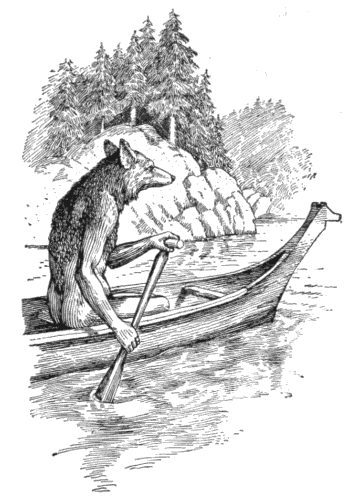The Prankster Deity within the Prairie Predator (Part 3)
U.S. folklorist John Barre Toelken that the Navajos did not make much of a distinction between coyote the predator and Old Man Coyote the trickster deity. That is, the former contains the essence of the latter (or maybe it’s the other way around).
So, what are the characteristics of coyotes, aka, Canis latrans, that make for an appealing animistic deity?
Immortality
In the original stories, Coyote is immortal–or at least he returns from death with the ease of a deity. Real coyotes are not immortal, of course, but they are remarkably difficult to kill as a species. We know because the U.S. government — as well as countless ranchers, farmers and hunters — has spent decades trying to exterminate the coyote population.
Despite this, and probably even because of it, coyotes have spread into virtually every part of the continental United States. Individually, coyotes have died in gruesome ways by the millions. But the species has grown smarter, more adaptable, more capable of prevailing against the calculated cruelties of humankind. Native Americans must have understood the incredible resiliency of the species thousands of years before the first Europeans tried to obliterate them.
Playfulness
Like most canines, coyotes are playful, both in groups and by themselves. When younger, they will give chase to one another, as you would expect from predators. But they’ll also figure out ways to play even while by themselves. They’ve been caught on camera playing with sticks, balls, chew toys, socks and whatever else comes happens to come their way. This sense of playfulness often shows up many Coyote myths.

Shrewdness
Coyotes are known for their intelligence. There are stories of coyotes creating diversions in order to get away with thievery, luring prey animals away from their territory so they can be attacked, scaring rabbits into traffic to avoid a chase, or teaming up with badgers to catch burrowing animals.
Coyotes can be notoriously difficult to trap and poison. Indeed, the many attempts have led to an evolutionary advantage among coyotes, who can often suss out human machinations. “Southwestern Hispanos have a rich folk tradition about coyotes and have long said that the only thing smarter than a coyote is God,” writes Dan Flores in his book American Coyote.
Trickiness
This one almost goes without saying since Coyote is a trickster god who is constantly conniving. Sometimes the tricks are for his own sake, such as the time he tricks the chief’s daughter into sleeping with him by pretending to be an inventor. Sometimes his tricks serve a larger purpose, such as when he steals fire to help humanity.
Real coyotes are also known for their wily ways, of course. Every time people think they have coyotes figured out, they find they have once again underestimated them. One widely used phrase concerning the coyotes was coined by specialist Fred Knowlton, who says, “Coyotes will make a liar out of you every time.”
Individualism
Coyote the god is an independent sort, often out adventuring on his own. But how does this jibe with coyotes the canids? Aren’t they, like wolves, pack animals? Not necessarily. Like human beings, coyotes developed what’s referred to as the fission-fusion adaptation. As National Geography reports:

This enables them to either function as pack predators or as singles and pairs. When they’re persecuted, they tend to abandon the pack strategy and scatter across the landscape in singles and pairs. And the poison campaign was one of the things that kept scattering them across North America.
In short, coyotes can easily operate as individuals. Experiments reveal that some are bold, others incredibly cautious. They have unique characters, which makes it hard to generalize about them.
There are, of course, other similarities between coyotes and Old Man Coyote: their adaptability, their quickness, their elusiveness, their amoral nature and more. In the end, though, it really comes down to this: Old Man Coyote is what happens when human imagination meets the astonishing resiliency and character of North America’s most unique, pervasive, successful and yet surprisingly familiar native canid. It is a kind of magical realism; Humanity looks in a mirror and sees a coyote visage staring back at us with shrewd eyes, a mocking smile, and mischief animating an immortal heart.
About the images:
A drawing of Huehuecoyotl, one of the deities described in the Codex Borgia https://en.wikipedia.org/wiki/Hu%C4 huecoy%C5%8Dtl#/media/File:Huehuecoyotl_CB.jpg
Anthropomorphic Coyote trickster, from North American Indigenous mythology, canoeing up the river. Source is Curtis, Edward S. Indian Days of the Long Ago. Yonkers-on-Hudson: World Book Company, 1915. Page 84.
Playing coyote pus from Western Washington State by VJAnderson, April 6, 2019
The post The Prankster Deity within the Prairie Predator (Part 3) appeared first on The Tollkeeper.



